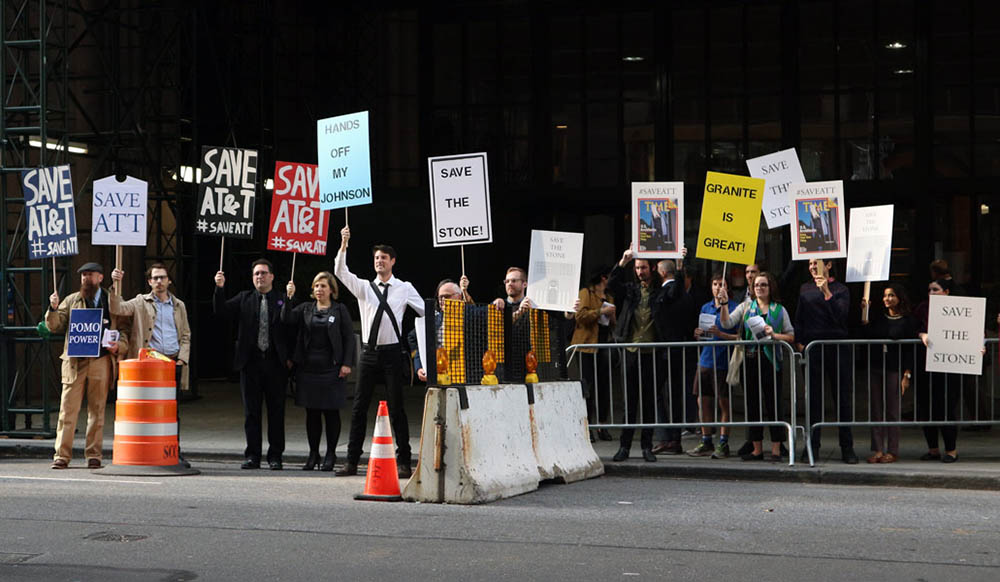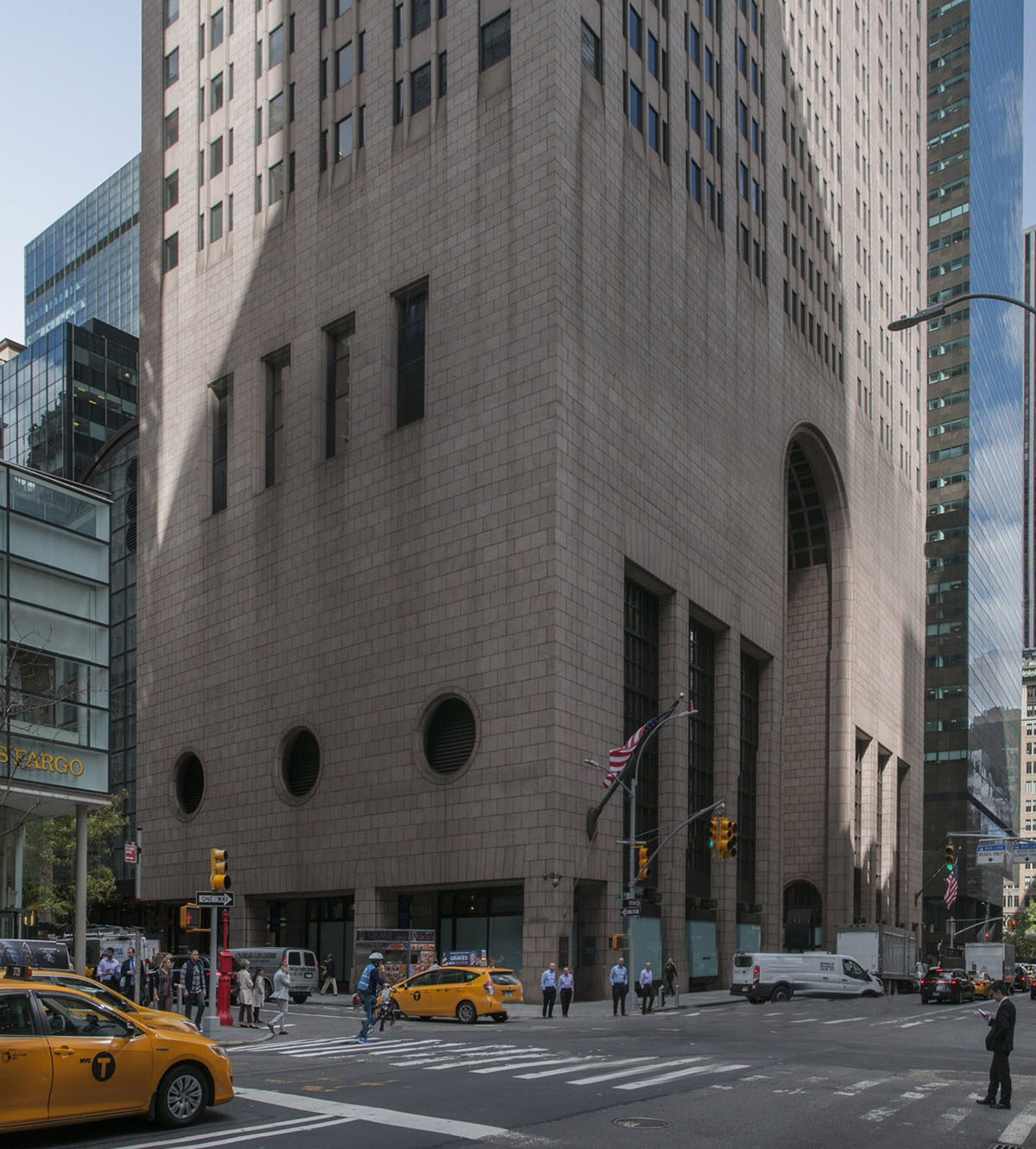Submitted by WA Contents
Architects protest Snøhetta’s proposal for AT&T building in New York
United States Architecture News - Nov 07, 2017 - 10:46 14958 views

Many architects along with preservationists protested Snøhetta's proposal for Philip Johnson's postmodern AT&T building in New York. A small group, comprised of around 20 people from different architectural fields, including a preservation group DOCOMOMO, the Historic Districts Council, architect Robert A.M. Stern and advocates attended a planned protest at the heart of Midtown Manhattan last Friday, carrying signs that write "Hands off my Johnson", "Granite is great" and "Save AT&T".
Metropolis magazine reporters captured the images of protestors and talked to some of architects and advocates to reflect the building's architectural significance and the reason of this reaction.
"It's one of the most important buildings of the last third of the century," Stern told Metropolis. "After the Seagram Building, you basically have AT&T."

Image © dropdeaded209
Snøhetta unveiled plans last week to overhaul Philip Johnson's iconic postmodern tower and the proposed design scheme suggested replacing the lower floors of the AT&T building with a glass facade.
After this proposal, many architects, designers and the architecture community come together to oppose the redesign of the iconic building and it was supported with two online petitions published in different websites - one of them started by filmmaker Nathan Eddy and another opened by Swiss journal Archithese. As you can see, the number of signers of both campaigns rises rapidly day by day. Nathan Eddy was also the organiser of this planned protest in New York and organised the community quickly over social social media.
Beside this, British architect Norman Foster shared a post on his Instagram account protesting Snøhetta's renewal for the AT&T building, but he said that since I'm in Europe, I will not be able to attend the protest.
"I was never sympathetic to the short lived post modern movement - and this building in particular. However it is an important part of our heritage and should be respected as such," Foster added.

Image © Jonathan Hilburg, courtesy of Architect's Newspaper
Architecture critics, Alexandra Lange, Alan G Brake, Alice Rawsthorn among those supporters of many campaigns and shared their posts on Twitter with a hashtag "#saveatt."
Guardian's architecture and design critic Olly Wainwright evaluated Snøhetta's redesign as "vandalism" on his Twitter account. Christopher Hawthorne from LA Times newspaper said that "Snøhetta plan is distinctly at odds with the spirit of the original design."
"Just as important, a crucial element of Johnson and Burgee’s original design is the solid, even heavy way the tower meets the ground. This is perhaps the building’s most classical feature, this insistence that a building gains power and presence by bringing stone all the way down to street level."
"I hope Olayan will pay close attention to the critical backlash and seek out some architectural second opinions. Otherwise Snøhetta’s glass curtain wall will hang over the Madison Avenue sidewalk like a guillotine of good taste," added Christopher Hawthorne in his article.

The former AT&T building showing giant arcade. Image © DBOX
Apart from that, New York Times' architecture critic Michael Kimmelman added that Philip Johnson and John Burgee's gigantic arcade was not successful as a public space and "it has always been a failure at street level", posted on his Twitter account.
Another opponent, Hilary Lewis, the Glass House chief curator and creative director, said: "the building is an extraordinarily important building for New York and for the history of postmodernism," reported Architect's Newspaper.
"I would encourage the owners to take a close look at what they have and [find] a way to bring it back to its former glory. Snøhetta is a significant firm that could do something interesting, but in a way that treats the integrity of the facade with greater delicacy."

Snøhetta's proposal for the AT&T building adding glass frontage into the granite facade. Image © DBOX
Philip Johnson with John Burgee built the 197-metre AT&T building in 1984 to function as the headquarters of the telecommunications company, which is one of the most iconic postmodern structures of that time. The AT&T building is commonly known as the first postmodern skyscraper, expressing itself as "a commercially-well-timed reaction against Miesian modernism and its derivatives" at that times.
The building was later occupied by giant electronic company Sony and renamed as Sony Building. Since the departure of the Sony Corporation more than a year-and-a-half ago, its office floors have sat vacant. Snøhetta's redesign scheme aims at modernising interior spaces to meet the contemporary needs of a variety of office tenants and adding high-quality amenities, world-class retail and restaurants.
Top image © Anna Fixsen, courtesy of Metropolis